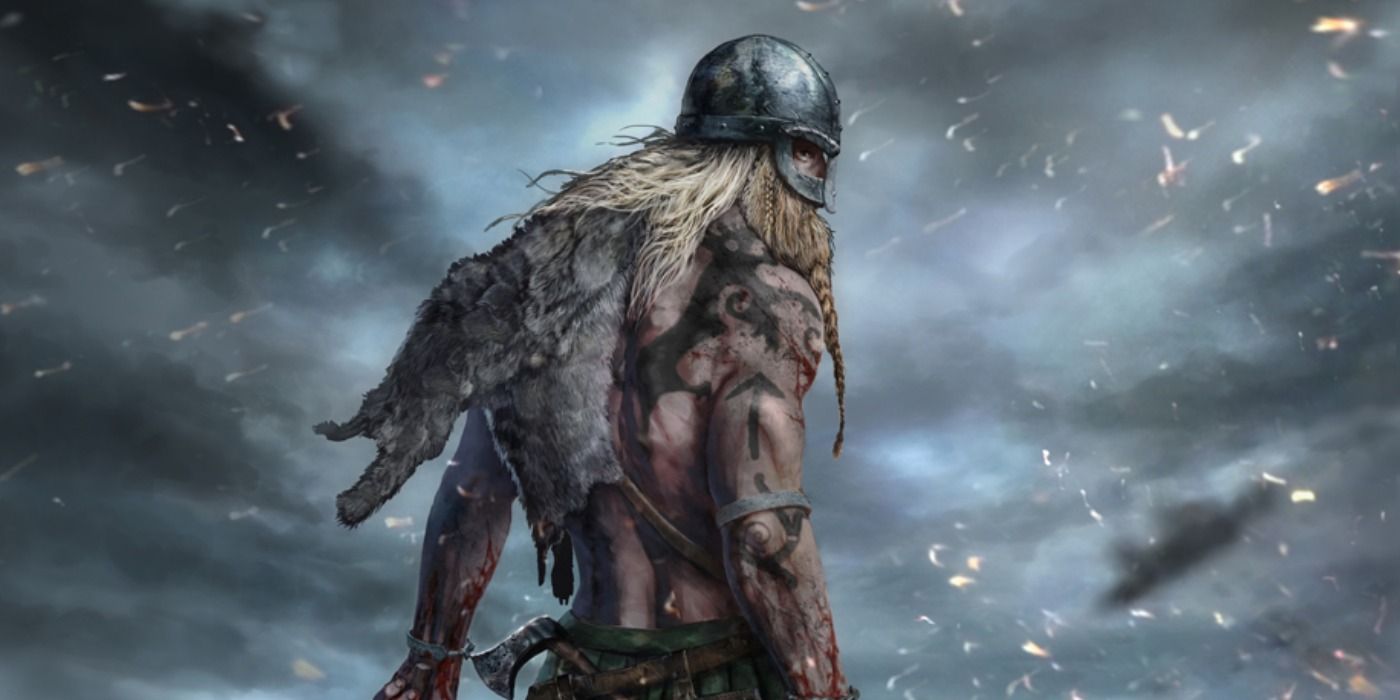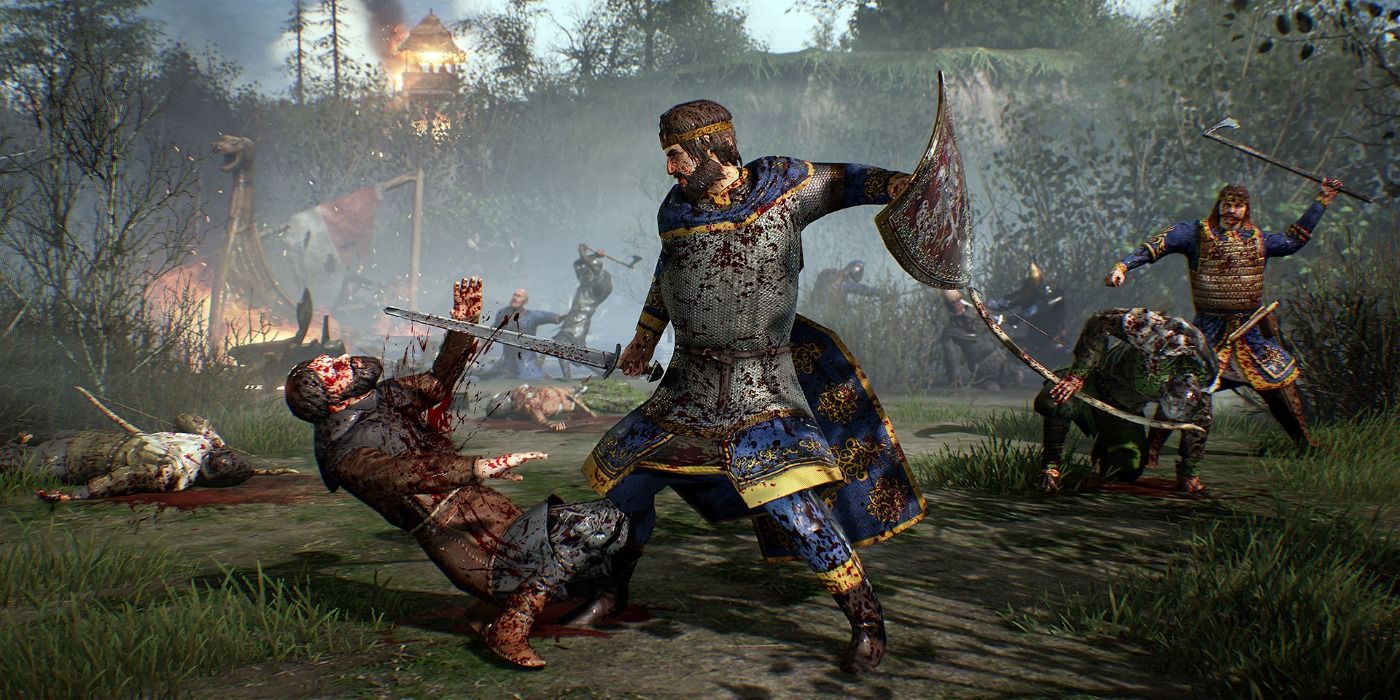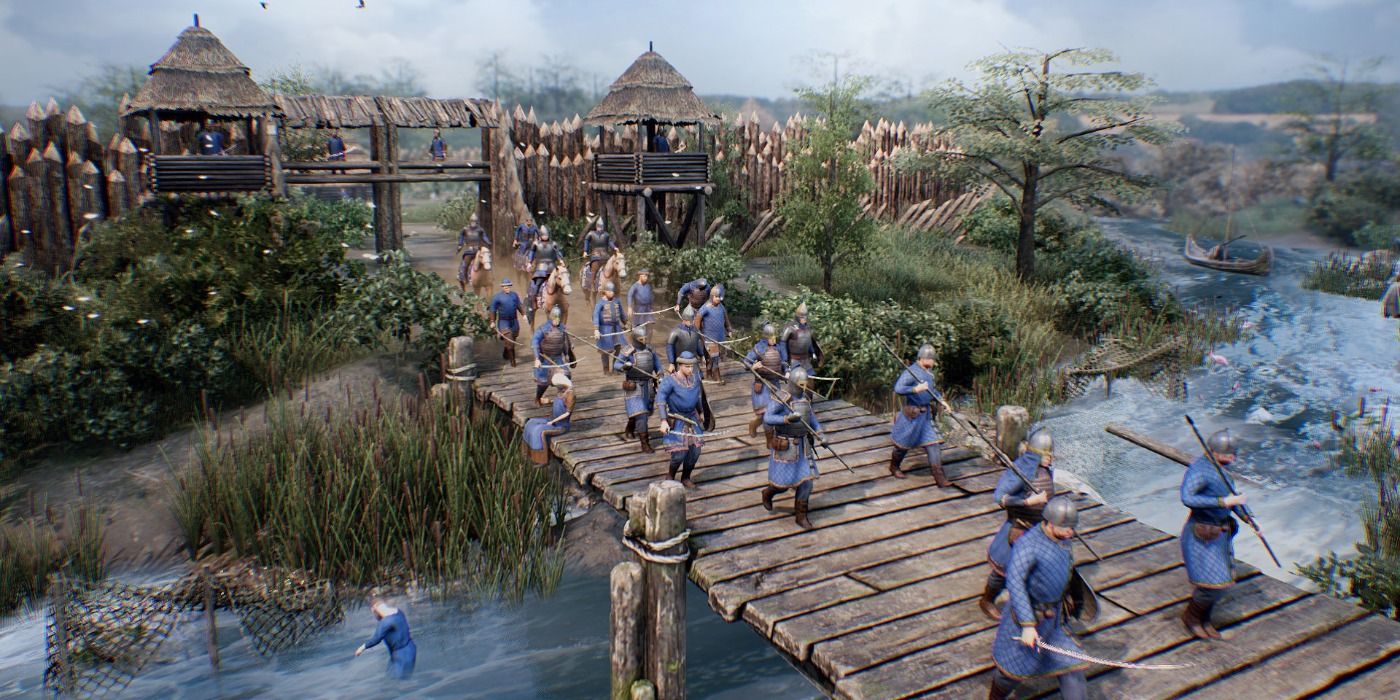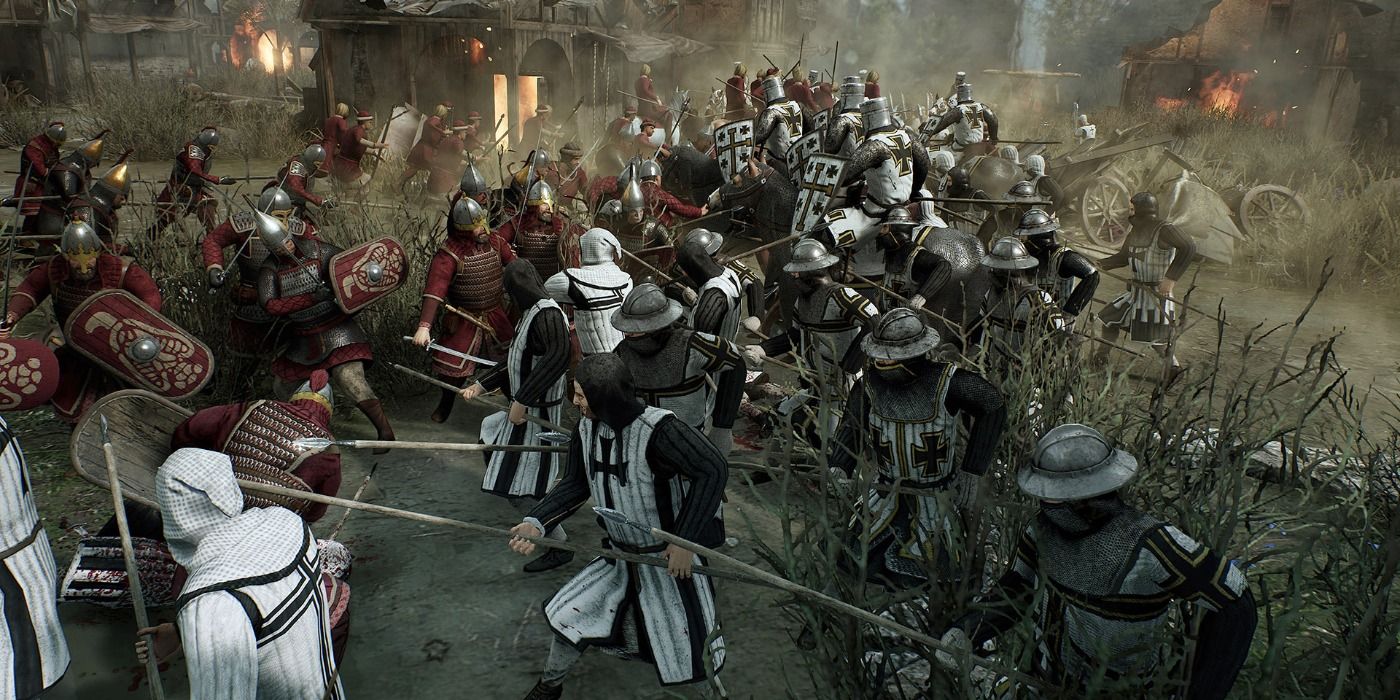Ancestors Legacy is a real-time strategy game that has made its way onto consoles after a PC release in May of 2018. The game pits four different factions from history against each other in small-scale conflicts as the player tries to take control of the map, in a manner which offers some exciting visuals and interesting gameplay, but has some issues in regards to how the game has been adapted for joypads and how well the player can control the units under their command.
Ancestors Legacy gives the player access to four different armies based on factions from history, including the Anglo-Saxons, the Germans, the Slavs, and the Vikings. The different factions have their own specialties on the battlefield, with the Anglo-Saxons possessing strong defensive infantry and deadly longbowmen, the Germans have amazing cavalry units and cheap armor upgrades, the Slavs have incredibly fast units that can quickly overwhelm the enemy, while the Vikings have powerful infantry that can swiftly replenish their ranks. The fans who are expecting factions as diverse as the ones in a game like StarCraft might be disappointed, but the devil is in the details and choice of faction and how the player uses them is important if they want to achieve victory.
The campaign mode of Ancestors Legacy has eight storylines consisting of five different missions, each of which focuses on a different historical figure related to each faction, such as Edward the Confessor. The single-player mode offers a lot of content and there are missions with special objectives that go outside of the normal gameplay, including controlling a single hero unit and sabotaging an enemy base while remaining hidden or completing missions for different encampments in order to gain their aid. There is also a skirmish mode that allows players to take on different factions on a single map, while multiplayer offers a Domination mode (control as many camps for as long possible) and Annihilation mode (wipe out the enemy completely).
The gameplay of Ancestors Legacy is similar to that of Company of Heroes, as the player needs to use their troops to control different camps on the map that provide resources used to make new troops or upgrade current ones. The player must strike a balance between protecting their existing assets and trying to claim new ones, since the ability to upgrade units over the course of the match will make them stronger, but a swift player who steals camps quickly can prevent the other players from buying and upgrading units in the first place. It's this balance that forms the backbone of Ancestors Legacy and the player cannot afford to remain complacent for long.
One of the most important aspects of combat in Ancestors Legacy is unit placement. A fight between two units of equal strength will come down to luck, but the player can tip the odds in their favor by launching surprise attacks (entire units can be hidden in tall grass), laying traps, or by flanking the enemy. All units have a morale score and this can be weakened by out-maneuvering the enemy or using the terrain to your advantage.
There are three basic infantry unit types (axes, shields, and spears) and they form a weapon triangle in the same manner as the Fire Emblem series, which means match-ups are the key to victory. The player also has access to archers, who deal incredible amounts of damage, but can also harm allies. There are cavalry units as well that can launch quick attacks and overrun enemies, but they are susceptible to spearmen. The manner in which the player sets these units up and the location in which battles take place makes all the difference, as the historical setting of Ancestors Legacy means that the player cannot rely on magic or other fantastical elements to cover their mistakes.
The importance of unit placement is hampered by the control scheme, however. The console version of Ancestors Legacy uses the controller joypad, and changes have been made to accommodate them, such as being able to select all nearby units with a single button press. In practice the controls are very finicky, with the mass-select option sometimes missing key units. It can also be difficult to select enemy units in battle when they are moving around and the player will often need to zoom right in to select them. There are also occasions where units will engage nearby enemies when they aren't supposed to, forcing you to issue retreat commands and moving them out of position. It's these moments when the player cannot effectively control their army that hold Ancestors Legacy back from being a truly great RTS experience on consoles.
The quality of the character models in Ancestors Legacy isn't very good and they wouldn't look out of place on the last generation of consoles, but the game has a visceral quality to its action that makes it exciting to observe. The game is built around the moments when pulling off a successful tactic and outmaneuvering an enemy, which leads to a rout in which your army overwhelms theirs in a blood bath.
Ancestors Legacy offers fast-paced action and strategy built around using the environment to your advantage. The difficulties in controlling units hamper the effectiveness of controling forces in battle, bringing some conflicts down to sheer luck. There is a lot of great content in Ancestors Legacy, but be aware that the control issues of the console ports might hurt the experience.
Ancestors Legacy is available now for PC, PlayStation 4, and Xbox One. A digital copy of the PlayStation 4 version of the game was provided to Screen Rant for the purposes of this review.




